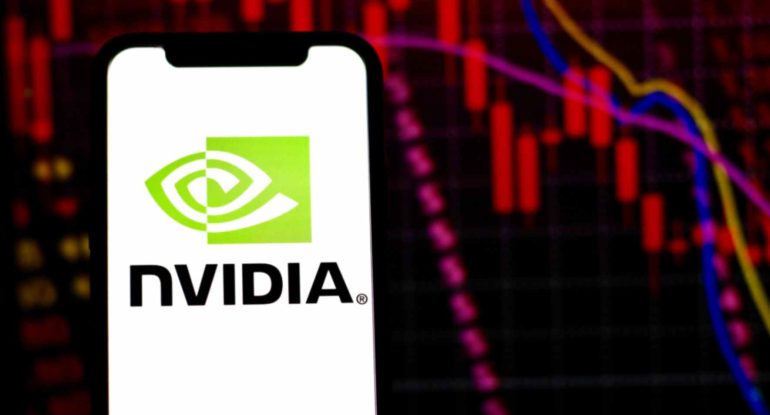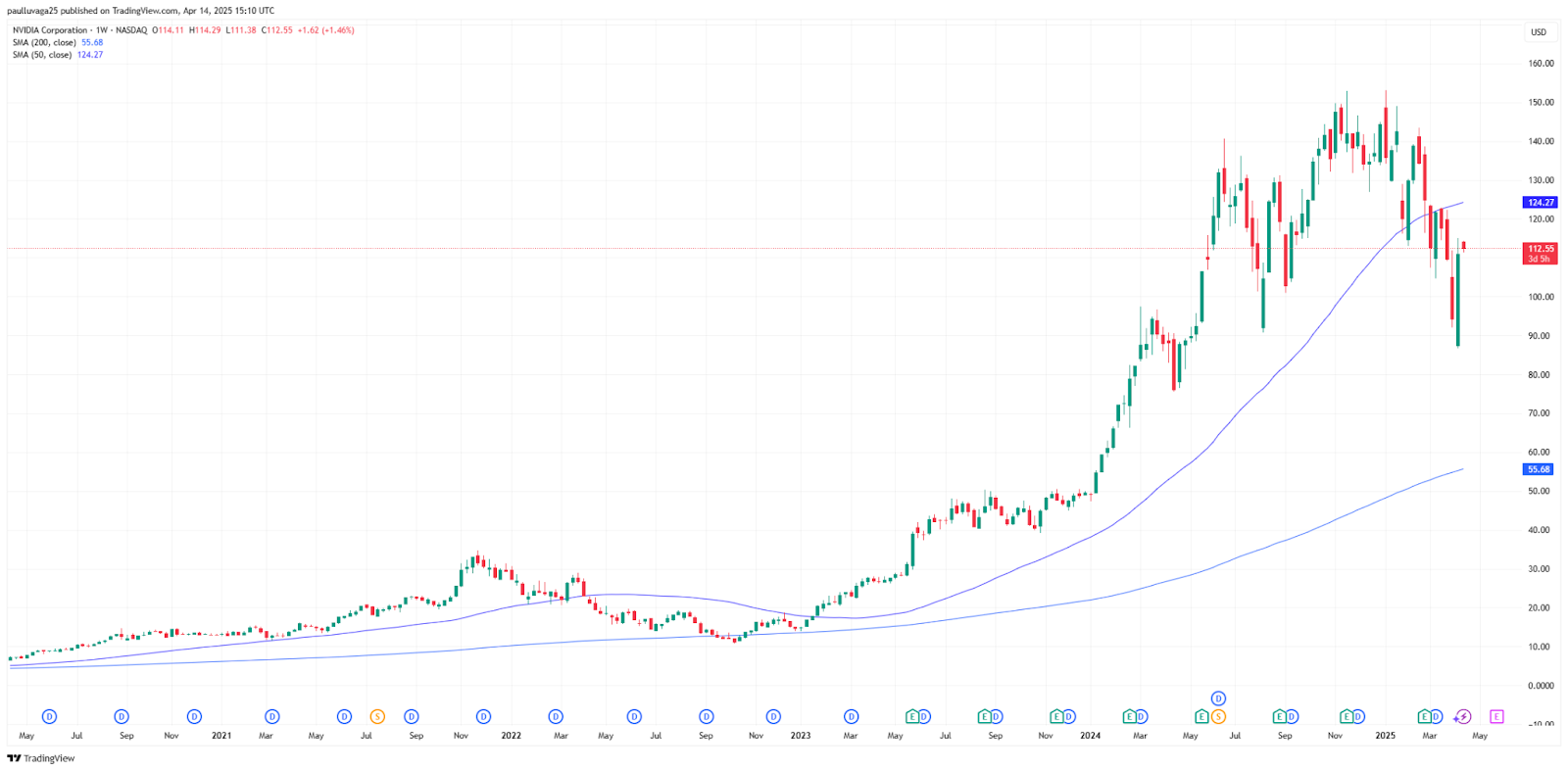Nvidia Stock Crash: Signal Targets $56

Nvidia (NASDAQ: NVDA) stock has caught the attention of investors as it hovers just above the $100 support level. However, some technical indicators are flashing warning signs, suggesting that this semiconductor giant could potentially face a significant downturn of up to 50%.
The journey for Nvidia shares has been a bit of a rollercoaster recently. Initially, concerns over escalating trade tensions between the U.S. and China sent the stock tumbling. But then, on Friday, a wave of relief washed over the market as reports surfaced that the White House might exempt crucial sectors like semiconductors from those much-feared retaliatory tariffs, leading to a stock rebound.
Despite this recent show of resilience, the possibility of further drops in the stock price isn’t off the table. Especially since President Trump has indicated intentions to impose fresh tariffs specifically on semiconductor imports, which could reignite market anxieties.
For now, though, the AI powerhouse seems to be holding its ground. Currently, Nvidia’s stock is up slightly by 1.1%, trading at $112 as of this writing.
Nvidia technicals signal crash
Taking a closer look at the technical charts, things appear a bit precarious for Nvidia. Analysis suggests the stock could potentially slide down to $56. This level is significant because it aligns with the 200-week simple moving average (SMA), a key long-term trend indicator. Adding to the bearish signals, a “Sell” signal has been triggered on the weekly chart, coinciding with the stock breaking below a crucial support level around $100.

We’ve seen a recent bounce – the latest trading candle shows a 17.62% jump back up to $110.93 after dipping below $90 during the market turbulence triggered by tariff concerns. However, analysts caution that this upward movement might just be a temporary breather.
Technically speaking, the stock has seemingly broken through its mid-term moving average and trend support area. This breakdown opens the door for a potential drop back down to retest the 200-week moving average, which is currently sitting near $56.
That $56 level is noteworthy; it’s a price point last seen in late 2022 and represents a major long-term support area, as well as a critical psychological point for investors. A move down to the 200-week SMA from current prices would translate to a substantial drop of over 50%.
Wall Street bullish on Nvidia stock
Interestingly, while the technical picture might look concerning, Wall Street analysts are painting a much more optimistic future for Nvidia. Forecasts from TipRanks project NVDA reaching $174 within the next year. Looking at analyst ratings, it’s overwhelmingly positive: out of 41 analysts, a whopping 37 recommend a ‘Buy,’ 4 suggest ‘Hold,’ and not a single one is advising to sell. The overall consensus is a ‘Strong Buy,’ with individual price targets ranging from $120 all the way up to $220.
Echoing this generally positive outlook, Citi analyst Atif Malik did adjust Nvidia’s price target downward on April 11, moving it from $163 to $150. The reasoning? Anticipation of slower growth in GPU sales, driven by expected spending cuts from major hyperscaler companies who are scaling back investments in data centers. Despite this revised sales forecast, Citi maintained a ‘Buy’ rating for the stock, signaling continued confidence.
On the same day, UBS also reinforced its bullish stance on Nvidia, reiterating its $185 price target and ‘Buy’ rating. UBS points to encouraging data coming out of Taiwan exports and a strong 10% jump in TSMC’s (Taiwan Semiconductor Manufacturing Company) March sales month-over-month as positive indicators for Nvidia’s data center business momentum. They anticipate an impressive 18% quarter-over-quarter increase in data center revenue, fueled by continued robust demand for AI infrastructure. However, UBS also offered a note of caution, suggesting the recent export strength could be due to companies front-loading orders to get ahead of potential tariffs, rather than representing purely sustained demand.
Featured image via Shutterstock











